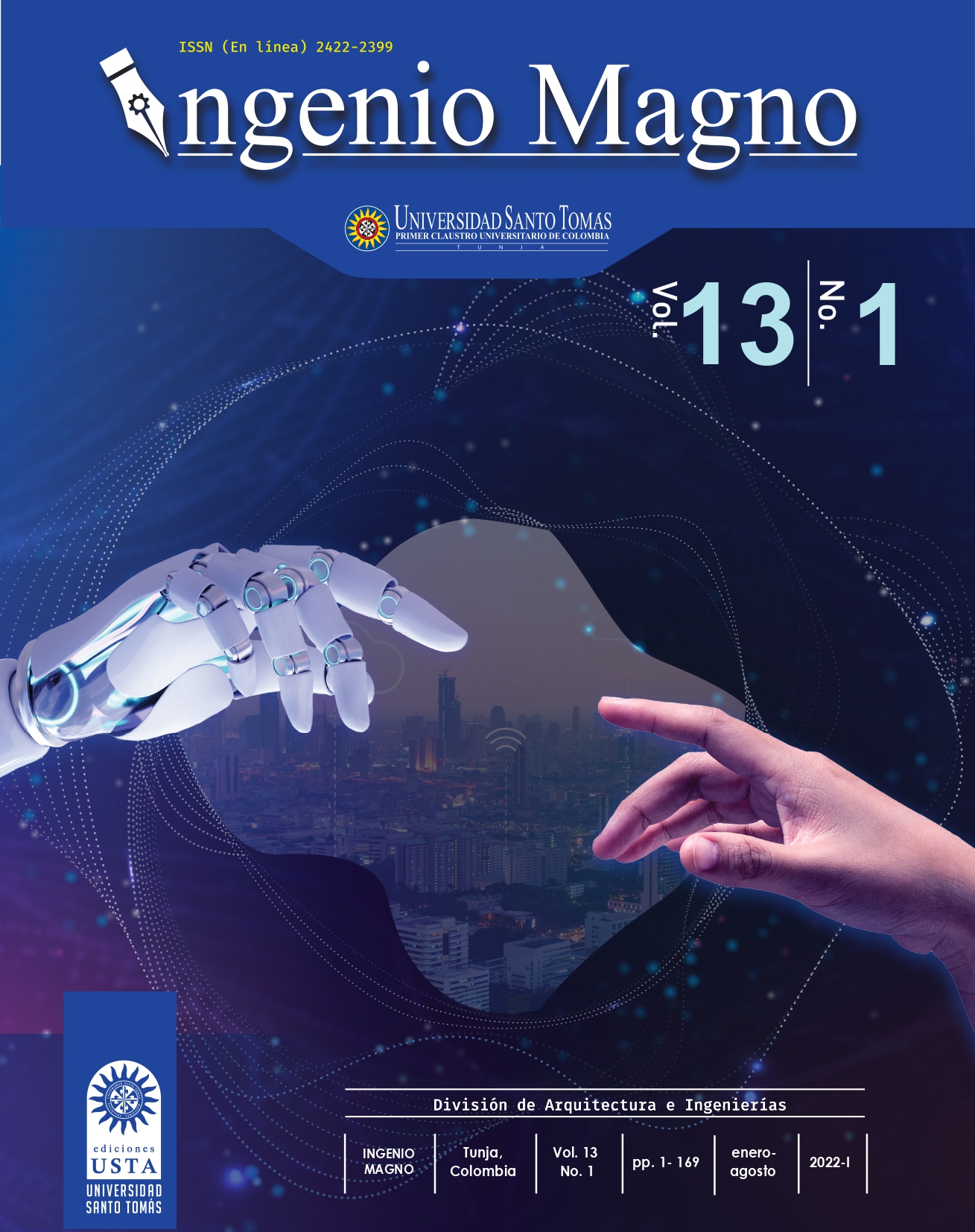Implementação de um dispositivo para medir a qualidade do ar em Tunja Boyacá
##plugins.themes.bootstrap3.article.main##
Resumo
Downloads
##plugins.themes.bootstrap3.article.details##
DECLARACIÓN DE ORIGINALIDAD DE ARTÍCULO PRESENTADO
Por medio del presente documento, certifico(amos) que el artículo que se presenta para posible publicación en la revista institucional INGENIO MAGNO del Centro de Investigaciones de Ingeniería Alberto Magno CIIAM de la Universidad Santo Tomás, seccional Tunja, es de mi (nuestra) entera autoría, siendo su contenido producto de mi (nuestra) directa contribución intelectual y aporte al conocimiento.
Todos los datos y referencias a publicaciones hechas están debidamente identificados con su respectiva nota bibliográfica y en las citas que se destacan como tal. De requerir alguna clase de ajuste o corrección, comunicaré(emos) de tal procedimiento con antelación a los responsables de la revista.
Por lo anteriormente expresado, declaro(amos) que el material presentado en su totalidad se encuentra conforme a la legislación aplicable en materia de propiedad intelectual e industrial de ser el caso, y por lo tanto, me(nos) hago (hacemos) absolutamente responsable(s) de cualquier reclamación relacionada a esta.
En caso que el artículo presentado sea publicado, manifiesto(amos) que cedo(emos) plenamente a la Universidad Santo Tomás, seccional Tunja, los derechos de reproducción del mismo.
Referências
[2] El caso específico del ozono como fuente de contaminación. (n.d.). Retrieved March 23, 2021, from https:// www.upo.es/depa/webdex/quimfis/ trab_alumnos/sevilla/sevilla.htm
[3] Guzmán Ruiz, L. A., & Buitrago Sierra, M. L. (2013). Formulación del sistema de vigilancia de la calidad del aire para el corredor industrial Paipa, Duitama y Sogamoso a partir de la red de vigilancia y calidad del aire del Valle de Sogamoso. In CORPOBOYACÁ (1998). Estudio de análisis de costo/beneficio del cambio de chircales ycaleras para el mejoramiento de calidad de aire en el Valle de Sogamoso. Tunja:Ecopetrol, UPTC. http://repository.unilibre.edu.co/ handle/10901/11319
[4] La Raspberry Pi 4 con 8 GB de RAM sube el nivel del proyecto. (n.d.). Retrieved April 10, 2021, from https:// www.muycomputer.com/2020/05/28/ Raspberry-pi-4-8-gb-ram/
[5] Martí Valls, J. (2017). Efectos de la calidad del aire sobre la salud. FMC Formacion Médica Continuada En Atencion Primaria, 24(9), 511– 514. https://doi.org/10.1016/j. fmc.2017.03.004
[6] math — Funciones matemáticas — documentación de Python - 3.10.4. (n.d.). Retrieved May 9, 2022, from https://docs.python.org/es/3/library/ math.html
[7] OMS/OPS. (2011). Vigilancia en Salud Pública. Módulo de Principios de Epidemiología Para El Control de Enfermedades (MOPECE), 4(Control de enfermedades), 54.
[8] Reporte mensual de calidad del aire CORPOBOYACA Agosto de 2020 IP- 2020-08 1.Introducción. (n.d.).
[9] Resumen de Salud Pública: Amoníaco (Ammonia) | PHS | ATSDR. (n.d.). Retrieved March 22, 2021, from https:// www.atsdr.cdc.gov/es/phs/es_phs126. html#bookmark3

